単語集
| 形質 | trait |
| 遺伝 | heredity |
| 遺伝子 | gene |
| 減数分裂 | meiosis |
| 対立形質 | alleles |
| 自家受粉 | self pollination |
| 純系 | pure |
| 自家受精 | self fertilization |
| メンデル | Mendel |
| 丸(エンドウマメ) | round |
| しわ(エンドウマメ) | wrincled |
| 他家受粉 | cross pollination |
| 顕性の法則 | law of dominant |
| 顕性形質 | dominant |
| 潜性形質 | recessive |
| 分離の法則 | law of separation |
| DNA(デオキシリボ核酸) | Deoxyribonucleic Acid |
ある生物が持つ特徴を形質という。
親の形質が子に伝えられることを遺伝という。
遺伝は染色体の中に含まれる遺伝子が親から子に伝えられることによって起こる。
1つの体細胞の中に同じ形と大きさの染色体が2本ずつペアになってあり、それらは父親と母親から1本ずつ受け継がれている。
ヒトの体細胞には染色体が23対ある。
A character of an organism is called "trait".
The heredity is that parents pass their traits to their baby.
The heredity cause that some genes contained in parents' chromosomes pass to their baby.
There are same shape and size chromosomes in pair in a body cell and one of pair is from its father and other is from its mother.
There are 23 pairs in human's body cell.
無性生殖の場合、親と子は同じ遺伝子を持つ。
体細胞分裂と同じ方法で遺伝子が子に伝わるからである。
In asexual reproduction, a parent and its child have same genes because the parent divide its genes(chromosomes) by somatic cell division.
有性生殖の場合、親はまず生殖細胞をつくる(減数分裂)。
生殖細胞は染色体の数が体細胞の半分になっていて、 これらの生殖細胞を組み合わせることで子をつくる(受精)。
子は父親と母親の両方から遺伝子(形質)を受け継ぐので、両親とも違う形質を発現する。
このように有性生殖では、多様な形質をもった子が生まれる可能性がある。
In sexual reproduction, parents make sex cell by meiosis.
The number of chromosome of each sex cell is half of body cell and parents produce their baby by combining their sex cells (fertilization).
The baby takes over genes(traits) from both its father and mother so has new traits different from its parents.
In this way, babies with diverse traits would be born.
遺伝の単元では、メンデルの実験を詳しく学習する。
メンデルはエンドウマメを育てて、遺伝の法則を発見した。
例えばエンドウマメの形には「丸」と「しわ」があり、これらを対立形質という。
エンドウマメは自然の状態では自家受粉する。
自家受粉や自家受精によって代々同じ形質が現れる場合、これを純系という。
We would be studying experimence of Mendel in this unit.
He nurtured pea plants and realized the law of heredity.
For example, the seed shapes of pea plant are either "round" or "wrinkled".
The various forms of the same gene or trait are called alleles.
Also pea plants are self-pollinated naturally.
When the child or the grandchild has same trait of their parents by self-pollination or self-fertilization we call this trait "pure" or "pure-bred".
純系の丸いエンドウマメと純系のしわのエンドウマメを掛け合わせると、子は全て丸い種子になる。
対立形質のうち、他家受粉するすると子に現れる形質を顕性形質、現れない形質を潜性形質という。
子としてできた丸い種子を自家受粉させると、孫世代は丸:しわ=3:1の割合で現れる。
メンデルはエンドウマメの細胞の中に形質の元になるもの(遺伝子)があると考えた。
現在では、遺伝子は染色体の中にあることが分かっている。
メンデルは顕性形質を現す遺伝子をA、潜性形質を現す遺伝子をaとモデル化した。
それぞれの遺伝子は細胞の中で対になっており、これらの記号を使うと、純系の丸の種子を作る遺伝子の組み合わせはAA、純系のしわの種子を作る遺伝子の組み合わせはaaとなる。
メンデルは純系の丸としわの種子を親として子ができるとき、子はそれぞれの親から丸としわの遺伝子をひとつずつ受け継ぐと考えた。
対になった遺伝子は減数分裂のときに染色体とともにそれぞれひとつずつ分かれて生殖細胞に入る(分離の法則)。
受精のときには遺伝子を1つしかもたない生殖細胞同士が合体するので、生まれる子のもつ遺伝子は再び対(2つ)になる。
このとき、丸の種子である親からAを、しわの種子である親からaを受け継ぎ、子の遺伝子はAaとなる。
このようすを式で表すと次のようになる。
親(丸)の減数分裂 AA→A+A
親(しわ)の減数分裂 aa→a+a
受精のようす A+a→Aa(丸)
子の遺伝子には顕性形質であるAが含まれているので、子は全て丸い種子になる。
Only "round" peas are born when you cross-pollinate with pure "round" and pure "wrincled" as parents.
The trait that appear in child(F1) is called "dominant", and does not appear is called "recessive".
Then you let F1(round) pea self-pollinate you can see that grand children(F2) appear at ratio of "round" and "wrincled" =3:1.
Mendel thought that the "elements"(genes) are in each cell of pea.
Now we know that genes are on chromosomes of a cell.
Mendel modeled a gene of dominant trait is as "A" and recessive is as "a".
Genes are paired in each cell or chromosome.
You can discribe combination of pure round seed of pea is AA and pure wrincled seed of pea is aa, using Mendel's symbols.
He thought that child is passed of one gene(round or wrincled) from its parents when parents are pure round and pure wrincled.
Paired genes on chromosomes are separated and put into two sex cells while meiosis(law of segrigation).
A baby new born has paired genes again because baby is produced by combining(fertillization) of two sex cells which have one gene.
At this time, a parent which is "round" passes a gene of "A", other parent which is "wrincled" passes a gene of "a" to fertillized egg and the baby has "Aa" genes.
I can show you this situation as the formula below.
meiosis of parent(round) AA→A+A
meiosis of parent(wrincled) aa→a+a
fertillization A+a→Aa(F1 is round)
All F1 peas are "round" because they have a gene of "A" which appears dominant trait.
ところで、染色体に含まれる遺伝子とは何でできているのだろうか。
遺伝子の本体はDNA(デオキシリボ核酸)という物質である。
DNAは細長いヒモ状の物質で、これが折りたたまれて染色体を形作っている。
そしてDNAに含まれる4つの塩基の配列によって作られるタンパク質の違いが形質の違いのもとになっている。
現在ではDNAや遺伝子の研究によって農業や医療が飛躍的に進歩している。
By the way, what are made of genes or chromosomes?
Actually, genes are made from DNA(deoxyribonucleic acid).
DNA is a substance like a long code and a chromosome is made of folded DNA.
Difference of traits is caused differnce of proteins.
Proteins are produced by information of bases which is contained in DNA, so the line up of 4 bases causes difference of traits.
Now, many reserchers study DNA or genes so that agriculture and medical care is progressing.










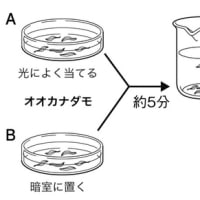
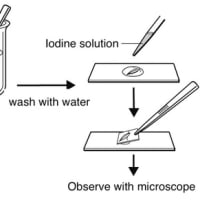
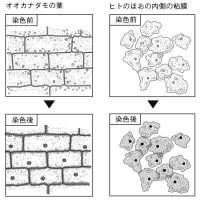



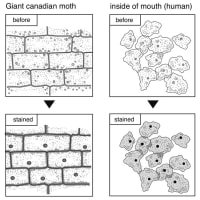
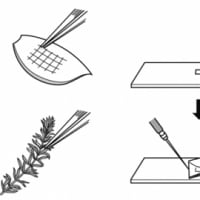

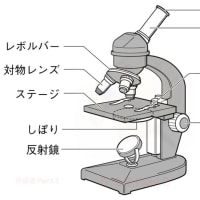
※コメント投稿者のブログIDはブログ作成者のみに通知されます